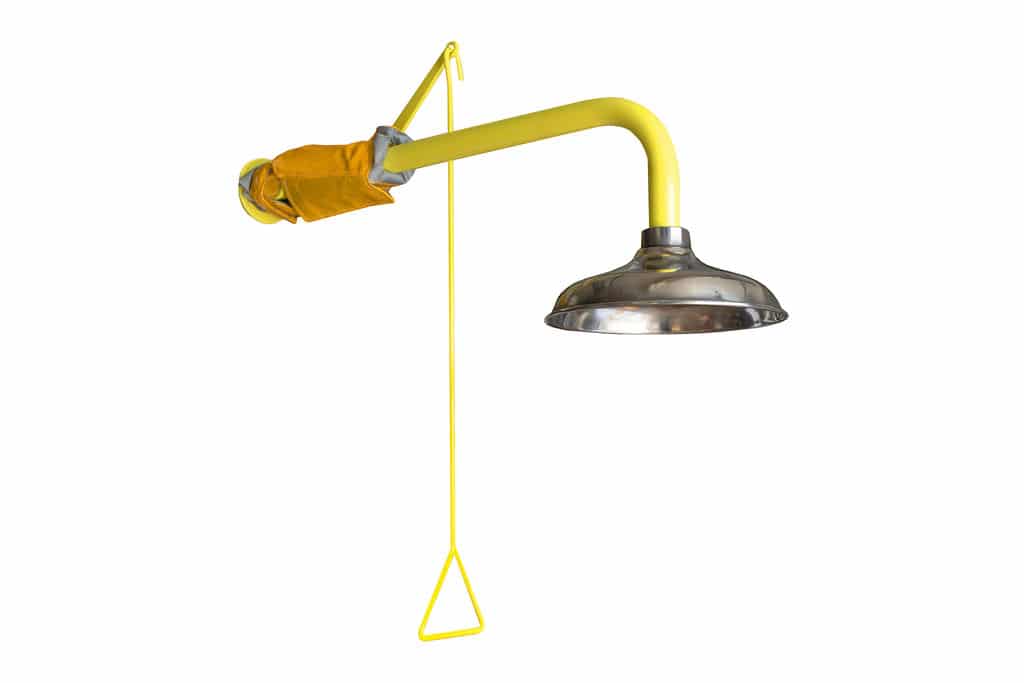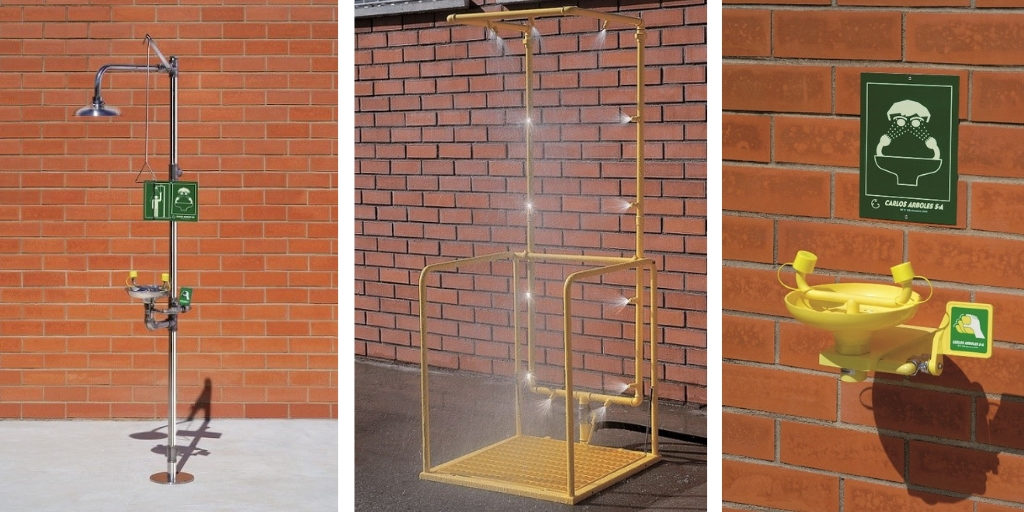What Should You Do If A Chemical Spills On Skin?
In any setting where chemicals are used, there is always the potential for injury or harm – especially if those working within this environment aren’t well versed in the best ways to prevent and treat chemical-related injuries.
When skin contact from any chemical spill or splash occurs, every second counts. Taking immediate and effective action is the best way to limit long-term side-effects, so having the correct equipment in place for treatment and ensuring that everyone in the workspace knows exactly how to use it is paramount.
With this in mind, what should you do if a chemical spills on your skin, what are the potential long-term effects of a chemical burn on skin and how can you prevent such injuries from occurring within your work environment in the first place?
Effects of chemical spills on skin
The potential effects of a chemical spill or splash on skin largely depends on two very important factors: the properties of the chemical and the length of time between chemical contact and first aid.
All chemical compounds have a place on the pH scale, with acids placed between 1 and 6 on the scale, neutral compounds at a 7, and alkaline compounds at the higher end of the scale between 8 and 14. The potential effects of alkaline and acidic compounds on skin are very varied but are increasingly severe depending on how close the chemical in question is to either end of the pH scale.
Chemical burns are classed using the same system as other burns – first-degree, second-degree and third-degree burns.
- First-degree (superficial) burns are those which only damage the outer layer of the skin. The affected area will likely be red and there may be pain or soreness, but there is usually no long-term damage. If a chemical burn is dealt with quickly or the chemical in question was near-neutral, you may be able to limit the severity of the injury to that of a first-degree burn.
- Second-degree (partial thickness) burns are those which extend into the second layer of the skin. In these cases, the affected area will likely see some swelling or blistering, potential scarring and will be painful to the touch for a longer period.
- Third-degree (full thickness) burns are the most severe, as several layers of the skin are damaged, as well as potential damage to the tissue and even the nerves underneath. These injuries usually leave permanent and irreversible damage, are more likely the result of a high-acid substance or a delay to first aid after chemical contact and may need more intensive treatment, such as skin grafting and cosmetic or functional reconstruction.
Whatever the acid or alkaline strength of the substance, limiting the time between contact and treatment is paramount in reducing the severity of the injury overall.
Treatment of chemical spills on skin
If someone within your working environment suffers skin contact with any chemical, the first and immediate action to take is to rinse the affected area under cool running water continuously for 15 minutes.
This should ideally be done using the closest nearby emergency shower, as they are able to expose a much larger surface area of the skin to continuous running water, making them far more effective in immediate chemical burn treatment.
When using a regular sink, the water may be unable to reach the entirety of the affected area at once – if this is the case, ensure that you keep the water moving back and forth across the affected area for the full 15-minute period.
Ensure that any clothing that may have been exposed to the chemical spill or that might prevent the thorough washing of the skin is removed as soon as possible and disposed of appropriately.
Finally, the affected person may be required to seek professional medical attention. If in doubt, call your national non-emergency helpline for advice, but those who have suffered a suspected third-degree or acid burn on skin should always be treated by emergency medical professionals.

How to neutralize acid on skin
While acid burns are almost always the most serious chemical burns, the first aid advice remains almost exactly the same – any affected clothing should be immediately removed and the burn should be placed under running water for up to 20 minutes.
However, time is even more of the essence when you know that the burn in question has been caused by exposure to an acid. In these cases, call for emergency medical attention as soon as possible – remember, every second counts.
Prevention of chemical spills on skin
It goes without saying that yourself and your peers should do whatever possible to prevent these incidents from occurring in the first place.
This means putting effective training and PPE (personal protective equipment) in place, ensuring that all team members are well-versed in the best practices for protecting themselves from the possibility of skin contact with chemicals. The Control of Substances Hazardous to Health (COSHH) is always a good place to start looking.
Effective training for those who work with chemicals should cover every aspect of chemical contact – the identification, transportation, transferring, storing and use of chemicals all have their own individual best practices, all contributing to the health and safety of everyone in your workspace.
Appropriate PPE should be accessible to all, too. When working with hazardous chemicals, recommended PPE includes laboratory-grade gloves, protective coveralls, face masks and protective goggles, all of which will help to protect those working with chemicals from inhaling dangerous fumes or the chemicals coming into contact with their eyes and skin.

Arboles UK – Emergency Showers
At Arboles UK, we take pride in helping work and education laboratory environments across the globe achieve and maintain the highest standards of health and safety for all.
We offer a wide range of decontamination booths, emergency eye wash stations, tank fed drench showers and emergency showers with a system to suit every setting – all essential equipment for those looking to protect the safety of those throughout their workspace. All our products meet and exceed current ANSI standards.
For more information or to enquire about any product within the Arboles range, get in touch with a member of the team today.
